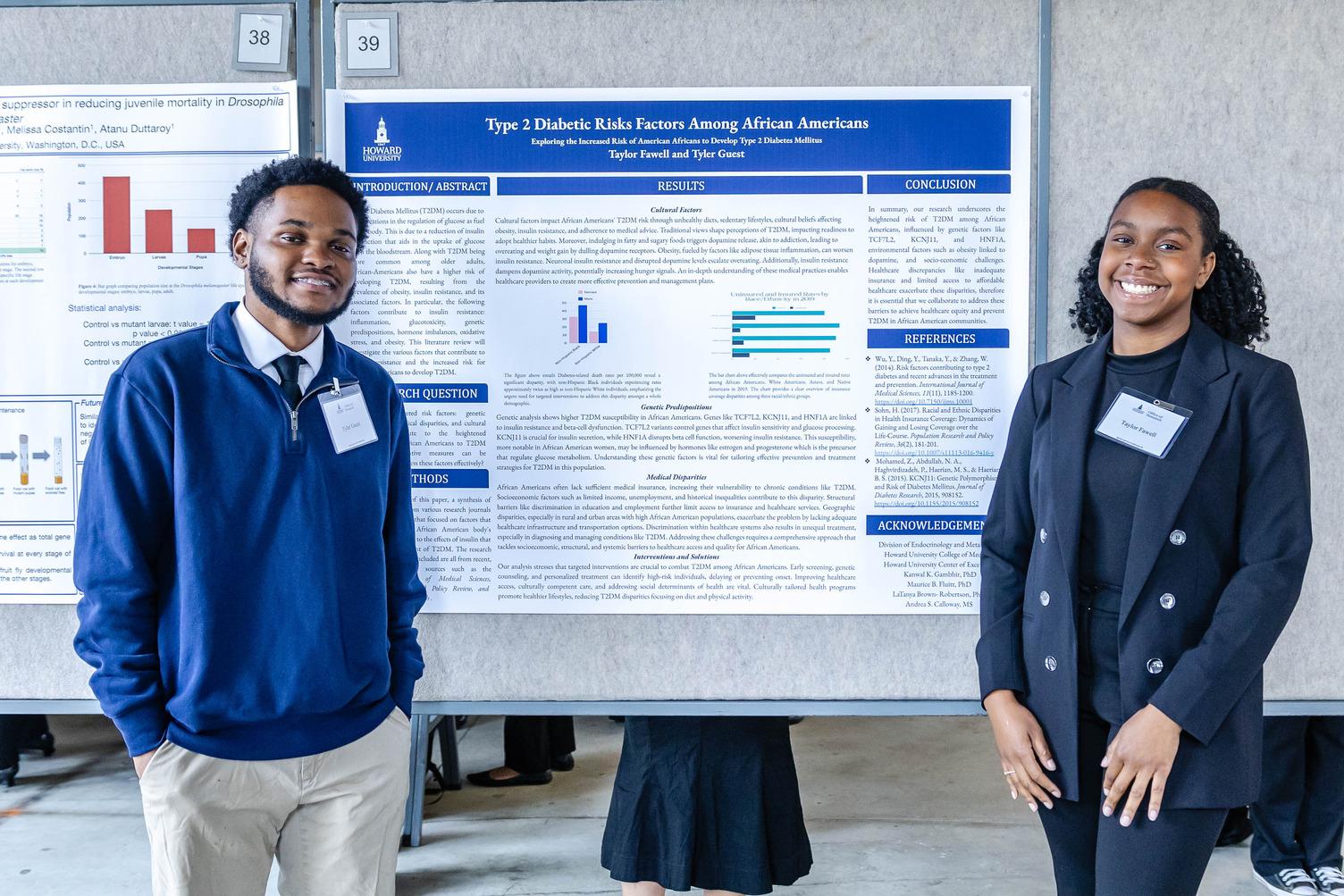The companies and institutions include a “who’s who” of names like IBM, DOW Chemical and The U.S. Air Force. The list of partner universities is just as impressive: including Brown, Caltech, Columbia, Cornell, Dartmouth, Georgetown, and Yale.
What drew this august group to the Howard University campus this year and historically has drawn an array of partners and grants nationally and internationally?
The answer is Research Month — part of Howard's ongoing efforts to foster its research mission and celebrate the University's research enterprise, which is comprised of external grants and contracts, distinguished scholarly projects, and outstanding creative works.

Like so many efforts Howard undertakes, the scope of breadth of Research Month is unique. “Many universities are lucky if they have a research day — they don’t have an entire month,” said Bruce Jones, professor and senior vice president for research. This year’s Research Month featured an event or two each day during April.
According to Pamela Clarke, who is head of research development in the Officer of Research, a full month is necessary to feature the depth and breadth of Howard’s research, much of which is interdisciplinary in nature. For example, this year’s event featured a gallery of more than 400 student research posters from all 14 of Howard’s schools and more than 20 different outside partner institutions.
This year’s Research Month featured an event or two each day during April. The month’s 14 key events included Computing for Social Good with Juan Gilbert, PhD, the recipient of the National Medal of Technology and Innovation; Battelle Research Seminar; Cancer Center Health Equity Scientific Symposium; Dow Howard Climate Summit; and Robotics, Artificial Intelligence, and Community Research Symposium. Other presentations included a two-day research symposium under the auspices of the IBM- HBCU Quantum Center and seminars presented by the Department of Energy National Laboratories including Argonne National Laboratory, Brookhaven National Laboratory, National Renewable Energy Laboratory and Oakridge National Laboratory.
This year’s event has already yielded four grant proposals from four different partners. “This is the magic that happens through Research Month,” Clarke said. That ongoing Research Month magic is helping Howard celebrate another milestone. Thanks in part to its research grant prowess, the University for the first time has met the criteria for the Carnegie Classification of Institutions of Higher Education’s R1 status — the “gold standard” of research, Jones said.
According to Jones, meeting the R1 criteria means that Howard must have at least $50 million in research expenditures and confer at least 70 research doctorates. Howard has exceeded these with $122 million in grants — an amount that more than doubled over the past five-year period — and 96 research doctorate graduates.
The Carnegie Classification is the nation’s leading framework for categorizing diverse U.S. higher education institutions, and R1 status indicates “very high research activity.” Howard is the first HBCU to meet the criteria for R1 status, and one of only 146 other universities out of more than 4,000 to do so.
“In a huge and unprecedented way, Howard continues to sustain its legacy of engaging in groundbreaking research,” Jones exclaimed. “Research Month has been critical to that success.”





